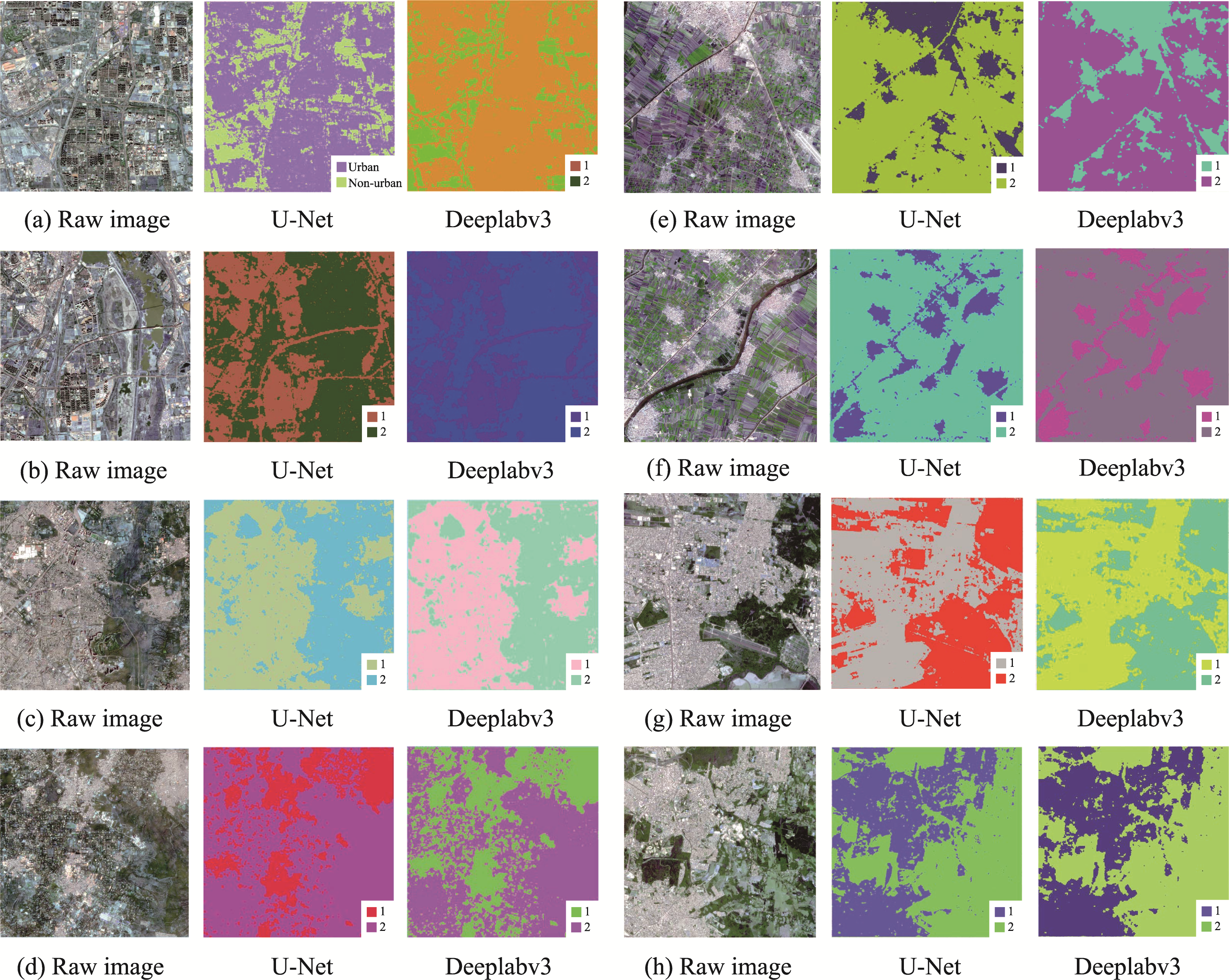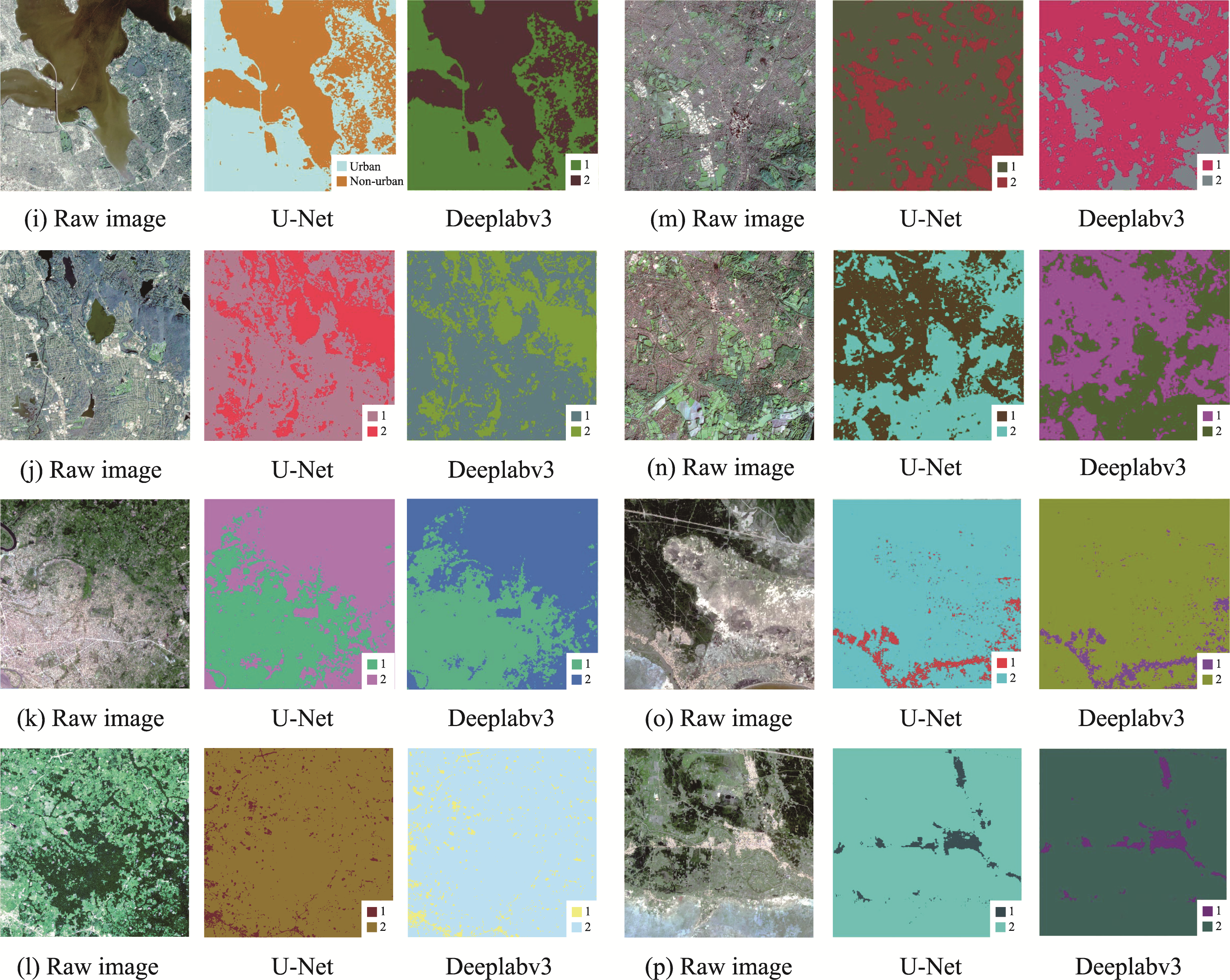| Pixel-based algorithms | Effective for images with distinct urban features | Difficult to differentiate green spaces from non-urban areas, sensitive to shadows | Simple urban layouts, low-complexity environments |
| Object-based methods | Faster processing, less affected by noise, with some image smoothing capabilities | Highly dependent on feature attributes and classifier selection, prone to misclassification | Large objects with clear boundaries and regular textures in urban extraction tasks |
| Deep learning (U-Net) | Fine-grained segmentation, suitable for detecting small urban features | Complex processing workflow, highly affected by training set accuracy, computationally intensive, slow processing | Extracting small UF coverage in small-scale urban areas, detailed segmentation tasks |
| Deep learning (Deeplabv3) | Strong robustness in large-area analysis, smooth segmentation | Often overlooks small urban elements, Like U-Net, the operation and training process is complicated and tedious. | Tasks with more noise outside the city, especially in large urban areas, smooth urban extraction |
| SAM | Fast and accurate segmentation, user-friendly | Less effective in fragmented urban layouts, may misclassify in cities with unclear boundaries. Currently, the SAM model can only perform single-category segmentation and cannot perform multi-category classification. The generalization ability on different sizes, resolutions, sensors, etc. is not clear enough. The applicability of unsupervised classification is not high enough. | Medium-sized cities with clear object boundaries and regular urban pattern |
 Figure 16 a to h images of UF extraction results based on two deep learning algorithms. Among them, Image a and b are from Beijing, China, c and d are from New Delhi, India, e and f are from Mansouria, Egypt, and g and h are from Porto Alegre, Brazil. In the legend, 1 represents urban areas and 2 represents non-urban areas.
Figure 16 a to h images of UF extraction results based on two deep learning algorithms. Among them, Image a and b are from Beijing, China, c and d are from New Delhi, India, e and f are from Mansouria, Egypt, and g and h are from Porto Alegre, Brazil. In the legend, 1 represents urban areas and 2 represents non-urban areas.
 Figure 17 The results of UF extraction based on two deep learning algorithms, are presented for images i through p. Among them, Images i and j are from New York, USA, k and l from Kisangani, Sudan, m and n from London, UK, o and p from Phan Thiet, Vietnam. In the legend, 1 represents urban areas and 2 represents non-urban areas.
Figure 17 The results of UF extraction based on two deep learning algorithms, are presented for images i through p. Among them, Images i and j are from New York, USA, k and l from Kisangani, Sudan, m and n from London, UK, o and p from Phan Thiet, Vietnam. In the legend, 1 represents urban areas and 2 represents non-urban areas.
 Figure 19 SAM-based UF extraction result diagrams, the extracted urban areas show the original colour that distinguishes them from non-urban areas, with a blue border distinguishing the two types of environments. Among them, Images a and b are from Beijing, China, c and d are from New Delhi, India, e and f are from Mansouria, Egypt, and g and h are from Porto Alegre, Brazil. In the legend, i and j from New York, USA, k and l from Kisangani, Sudan, m and n from London, UK, o and p from Phan Thiet, Vietnam.
Figure 19 SAM-based UF extraction result diagrams, the extracted urban areas show the original colour that distinguishes them from non-urban areas, with a blue border distinguishing the two types of environments. Among them, Images a and b are from Beijing, China, c and d are from New Delhi, India, e and f are from Mansouria, Egypt, and g and h are from Porto Alegre, Brazil. In the legend, i and j from New York, USA, k and l from Kisangani, Sudan, m and n from London, UK, o and p from Phan Thiet, Vietnam.